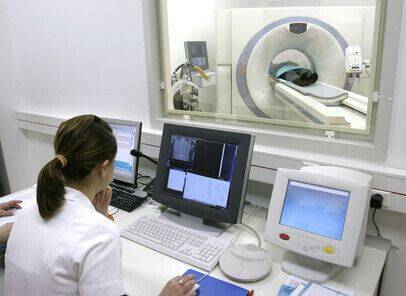Asymptomatic aortic stenosis has been keeping us in tense stillness. However, there are new markers capable of identifying patients that might benefit from earlier intervention. In this regard, cardiovascular magnetic resonance (CMR) has been gaining its well-deserved place in cardiology and now more specifically in aortic stenosis.

This study sought to validate CMR markers of prognostic value to aortic stenosis and its thresholds to predict mortality.
The study prospectively included 799 aortic stenosis patients (n=440 in the derivation cohort and n=359 in the validation cohort) from 13 international centers followed up for nearly 4 years.
CMR was done shortly before surgical or transcatheter aortic valve replacement (AVR). A forest model was used with 29 variables (13 CMR) capable of predicting mortality and post procedure events.
There were 52 deaths in the derivation cohort and 51 deaths in the validation cohort. The 4 CMR markers with most predictive power were extracellular volume fraction, late gadolinium enhancement, indexed left ventricular end-diastolic volume, and right ventricular ejection fraction.
Mortality increased significantly both in the global cohort and among asymptomatic patients when extracellular volume fraction exceeded 27%. 2% of late gadolinium enhancement showed persistent high risk.
Read also: Anticoagulation with Heparin in Non-Critical COVID-19.
As regards indexed left ventricular end-diastolic volume, increased mortality was also observed at both extremes. High (>80 ml/m2) and low volumes (<55 ml/m2) were mortality predictors.
There was also increased mortality with high (>80%) and low (≤50%) right ventricular ejection fraction (>80% y <50%).
Predictability improved even further when these 4 markers were combined with clinical factors
The prognostic thresholds and risk stratification by CMR variables were reproduced in the validation cohort.
Conclusion
Myocardial fibrosis and biventricular remodeling are the best prognostic factors in patients with aortic stenosis. We should highlight its non-linear association with mortality.
CMR has the potential to optimize decision making in treating patients with aortic stenosis.
Original Title: Markers of Myocardial Damage Predict Mortality in Patients With Aortic Stenosis.
Reference: Soongu Kwak et al. J Am Coll Cardiol. 2021 Aug 10;78(6):545-558. doi: 10.1016/j.jacc.2021.05.047.
Subscribe to our weekly newsletter
Get the latest scientific articles on interventional cardiology





